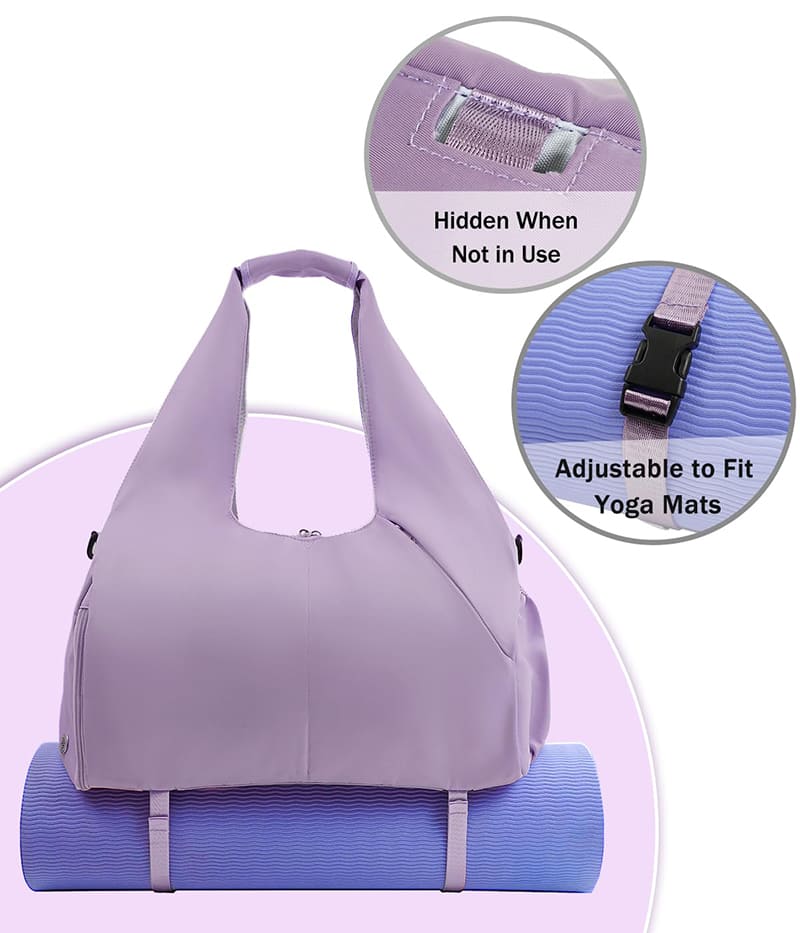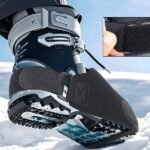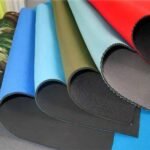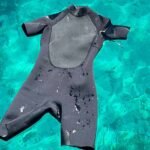When choosing a bag, whether for everyday use, travel, or special occasions, the material is everything. You’ve probably heard about neoprene—the wetsuit fabric—but is it actually good for bags?
Neoprene is an excellent material for bags because it’s highly durable, water-resistant, lightweight, and versatile. It withstands daily wear and tear, making it perfect for backpacks, handbags, and travel bags. Although pricier than some materials like nylon, its comfort, durability, and stylish look justify its cost.
Imagine your bag getting soaked in the rain, only to realize everything inside is still completely dry. Intrigued? Let’s dive deeper into why neoprene might just be the ideal material for your next bag.
What is Neoprene, and How is it Made?

Neoprene is a synthetic rubber material created through polymerization of chloroprene. It’s known for flexibility, insulation, and resistance to water, sunlight, and oil, making it highly practical for various products, including bags.
-
What exactly is neoprene fabric?
Developed initially in the 1930s by DuPont, neoprene has since become popular in various industries, especially sportswear, due to its excellent insulating properties and flexibility. -
How is neoprene manufactured for bag production?
Neoprene production involves polymerizing chloroprene molecules, which creates a stable, foam-like rubber that’s later bonded with fabrics such as polyester or nylon to enhance durability and comfort. -
Is neoprene a cheap material?
Compared to budget materials like polyester, neoprene isn’t the cheapest, but its long-lasting quality and premium feel offer better long-term value, making it a worthwhile investment for bags. -
Is neoprene considered sustainable or eco-friendly?
While neoprene isn’t entirely eco-friendly, sustainable practices such as recycling neoprene and eco-certified factories reduce environmental impact significantly.
Why is Neoprene a Popular Choice for Bags?
Neoprene is popular due to its blend of practical and aesthetic benefits. It’s waterproof, durable, flexible, and fashionable, making it an attractive choice for both everyday users and high-end brands.
-
What makes neoprene stand out among other fabrics?
Its unique combination of flexibility, cushioning, insulation, and water resistance means neoprene bags keep their shape and protect items inside, even under harsh conditions. -
How does neoprene compare to materials like nylon, canvas, or leather?
Nylon is cheaper but less cushioned; canvas is stylish but not waterproof; leather looks premium but needs careful maintenance. Neoprene balances all these qualities.
| Material | Waterproof? | Cushioning? | Style | Maintenance |
|---|---|---|---|---|
| Neoprene | ✅ | ✅ | Modern | Easy |
| Nylon | ✅ | ❌ | Casual | Moderate |
| Canvas | ❌ | ❌ | Vintage/Casual | Hard |
| Leather | ❌ | ✅ | Premium | Difficult |
- Is neoprene good for handbags?
Absolutely! High-fashion brands often use neoprene handbags for their sleek, contemporary look, lightweight feel, and ease of cleaning.
How Durable and Reliable are Neoprene Bags?
Neoprene bags are exceptionally durable and reliable. They’re water-resistant, resistant to tearing, and hold their shape well, ensuring long-term use without significant wear.
-
Is neoprene a durable material?
Yes, neoprene withstands frequent use and challenging conditions, maintaining structural integrity far longer than standard fabrics like cotton or canvas. -
Are neoprene bags waterproof or just water-resistant?
Typically water-resistant, neoprene effectively keeps moisture out. Though not completely waterproof (due to zippers and seams), it’s reliable in wet environments. -
Do neoprene bags tear easily or resist damage well?
Neoprene resists tearing exceptionally well, thanks to its rubber-like elasticity, ideal for daily wear. -
How long do neoprene bags typically last?
With proper care, neoprene bags last several years—commonly between 5-10 years, considerably longer than many alternative materials.
Which Types of Bags are Best Made with Neoprene?
Neoprene is ideal for backpacks, laptop sleeves, gym bags, lunch bags, and travel bags due to its lightweight, cushioned protection, and resistance to water and dirt.
-
Is neoprene good for backpacks?
Yes, neoprene backpacks provide excellent cushioning, protection for electronics, and comfort, especially for commuting and outdoor activities. -
What about laptop sleeves, lunch bags, or tote bags?
Perfect for these purposes, neoprene insulates against temperature changes, protects contents from damage, and easily cleans up from spills.

-
How do neoprene bags perform in sports or fitness contexts?
Neoprene excels in fitness contexts, easily managing sweat, moisture, and providing durable yet stylish solutions for sports enthusiasts. -
Which scenarios are neoprene bags especially suited for?
Ideal for daily commuting, beach visits, gym trips, outdoor adventures, and even casual or professional settings due to their versatility.
Are Neoprene Bags Good for Travel?

Neoprene bags are excellent for travel. Lightweight, comfortable, protective, and water-resistant, they keep belongings secure and accessible, whether traveling locally or internationally.
-
How convenient and practical are neoprene bags for traveling?
Extremely practical—flexible enough to fit into tight spaces while offering ample protection against impacts and weather conditions. -
Do neoprene bags protect contents effectively during trips?
Yes, their cushioning properties absorb shocks, making them ideal for fragile items like electronics or toiletries. -
Are neoprene bags lightweight enough for frequent travel?
Absolutely! One of neoprene’s major benefits is its impressive strength-to-weight ratio, perfect for frequent travelers who want to minimize weight.
How Comfortable and User-Friendly are Neoprene Bags?
Neoprene bags offer superior comfort thanks to their flexibility, softness, and lightweight nature. They’re user-friendly, easy to carry, clean, and maintain.
-
Do neoprene bags feel bulky or lightweight during daily usage?
Typically lightweight and comfortable, neoprene bags rarely feel bulky, making them ideal for daily usage. -
How easy are neoprene bags to clean and maintain?
Extremely easy—most neoprene bags are washable by hand or machine, drying quickly without deforming. -
Do neoprene bags have issues like odors or breathability?
Occasional odor buildup is possible, but neoprene’s quick-drying property significantly reduces this concern. Regular cleaning solves the issue entirely.
How to Customize Neoprene Bags for Your Brand or Business?

Neoprene bags are excellent for branding. Logos print clearly, customization is flexible, and the premium feel adds significant value, appealing to both small buyers and luxury brands.
- Which customization methods (such as printing or embroidery) work best with neoprene?
Screen printing, heat transfer, and embossing logos are particularly effective, producing durable, vibrant results.
| Customization Method | Suitability | Durability |
|---|---|---|
| Screen Printing | Excellent for clear logos | High |
| Heat Transfer | Vibrant colors, detailed designs | Moderate to High |
| Embossing | Premium look for upscale brands | High |
-
Why do brands and high-end businesses choose neoprene for customized products?
Its modern aesthetic, high-quality perception, and functional benefits position neoprene as a premium choice for upscale branding. -
Is neoprene a cost-effective choice for bulk orders and customization?
Yes. Despite initial higher costs, neoprene’s long-term durability, ease of customization, and premium appeal ensure strong ROI for businesses.
Ready to elevate your brand with customized neoprene bags?
At Szoneier, we offer professional neoprene bag manufacturing services with rich experience, guaranteed quality, free designs, and samples.











